Analysis of Decision-Making Responses
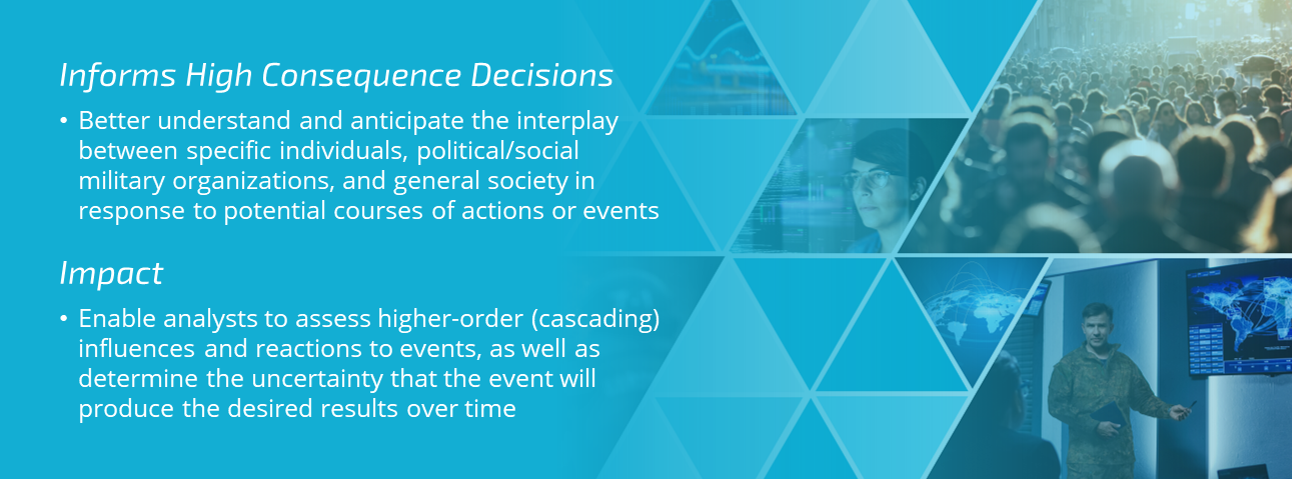
DYMATICA™ (Dynamic Multi-scale Assessment Tool for Integrated Cognitive-behavioral Actions) is a computational approach to help decision makers better understand and anticipate the decision calculus and likely responses of populations, groups, and governmental institutions to different situations and conditions.
The intent of DYMATICA is to minimize the likelihood of decisions that lead to undesirable consequences by providing a more systematic analysis of decisions within state and non-state entities. DYMATICA assessments are designed to analyze geopolitical, psychosocial, economic, and military phenomena in existing environments.
Why is DYMATICA important?
DYMATICA is designed to help answer why a country or population of interest is acting a certain way and anticipate how it would respond to different occurrences, such as changes in the economy, sociocultural landscape, or the initiation of government course of actions (COAs) over time.
A typical DYMATICA assessment can show how different scenarios are likely to affect key outcomes (subject to a variety of causal hypotheses) over time. Depending on the situations of interest, these outcomes might be geopolitical (such as interactions between countries), at the group level (such as the collective propensities of various socio-economic status groups, urban/rural population divergences, or tendencies of groups to engage in conflict or social unrest), and at the individual level (such as decisions made by a leader). Output can also be non-cognitive (such as resource availability or economic trends). Structural and parametric uncertainty can be incorporated to demonstrate the range of likely outcomes given a variety of potential circumstances. The assessment output typically portrays how various COAs and other exogenous conditions jointly affect various endogenous model parameters. (For more information see DYMATICA Process & Development)
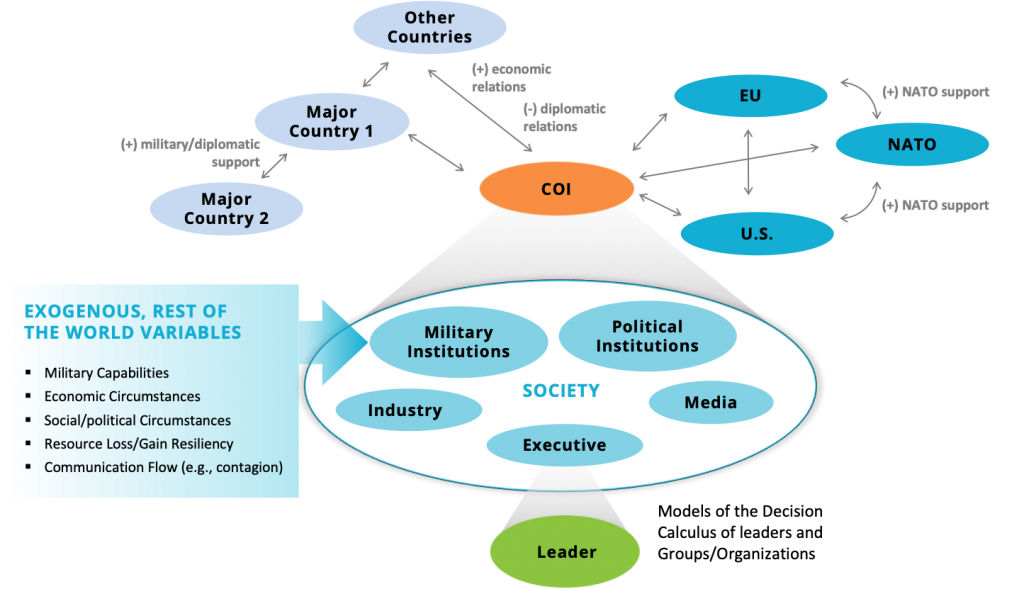
What does DYMATICA Enable?
Descriptive and Prescriptive Analytics
The main use of DYMATICA is to help describe and prescribe current and likely behaviors to help organizations develop, understand, and compare likely effects of potential COAs under a variety of geopolitical scenarios. Here, DYMATICA supports hypothesis generation and COA development, analysis, and comparison while accounting for uncertainty in the environment. DYMATICA can also compare and integrate views from multiple SMEs in a common, decision theory-based format.
Economic, military, political, and social data and information, guidance from subject matter experts (SMEs), along with other relevant inputs are used to populate dynamic, psychosocial theory-based mathematical models. This results in assessments that enable rich exploration of outcomes under a variety of conditions. (For more information see DYMATICA Assessments)
Whole of Government/Population Tabletop Training Simulations
DYMATICA has simulated dynamic government, group, and population responses to natural and man-made disruptions, including phenomena associated with different types of hybrid conflicts. Recent efforts have coupled DYMATICA with interdependent infrastructure network models – designed to simulate detailed disruption dynamics (electric power, food fuel, transportation) – and a social media model to collectively simulate population and government responses during different disruptions and conflict events. In addition, DYMATICA is being coupled with a supply chain modeling tool (SoSAT) and social media output driven by physical and social state variables. (For more information, see DYMATICA Assessments)
Work is underway to extend DYMATICA to enable tabletop training based on real-world events and behaviors. This framework can currently simulate:
- Socio-cultural population behaviors at different scales and time horizons
- Social/political dynamics in response to disruptions within infrastructures
- Different types of infrastructure disruptions and failures (at city block levels)
- Different levels of intensity of adversary actor events
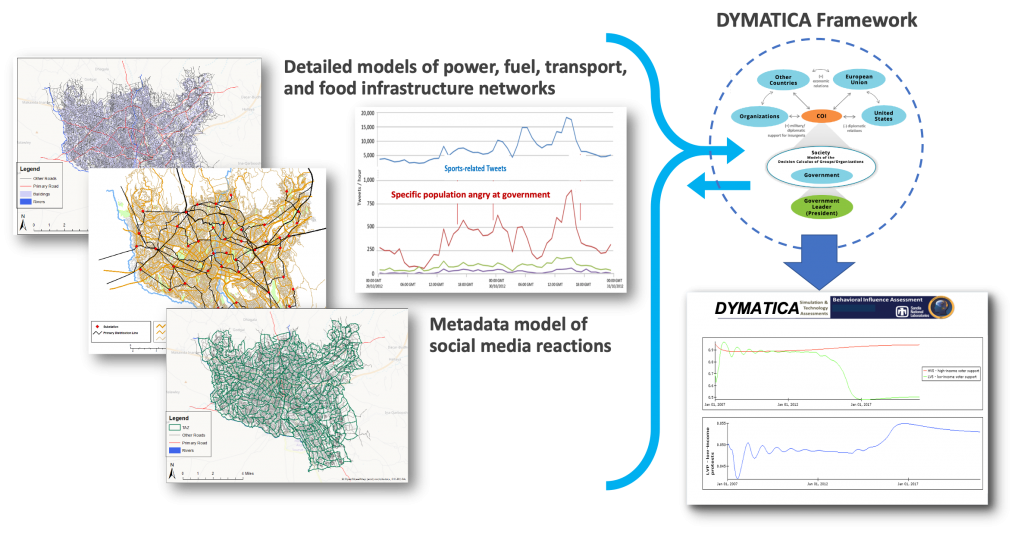
Operational & Command Decision Simulations
DYMATICA is also being extended to simulate dynamic decision making within operational units and command authorities. This includes simulating how different elements within a conflict environment affects the decision-making process and how these decisions, in turn, affect the conflict environment. The intent is to produce cognitively realistic simulations of decision behavior, considering techniques, tactics & procedures, situational awareness, and human psychology. (For more information see DYMATICA Assessments)
The DYMATICA decision engine is being designed to ingest data from different simulation inputs that represent various conflict environments as they would occur in real time or faster than real time. The figure below symbolizes DYMATICA representations at different command levels. Here, information in the form of commands and actions at the higher level serve as inputs to the decision models at lower levels.
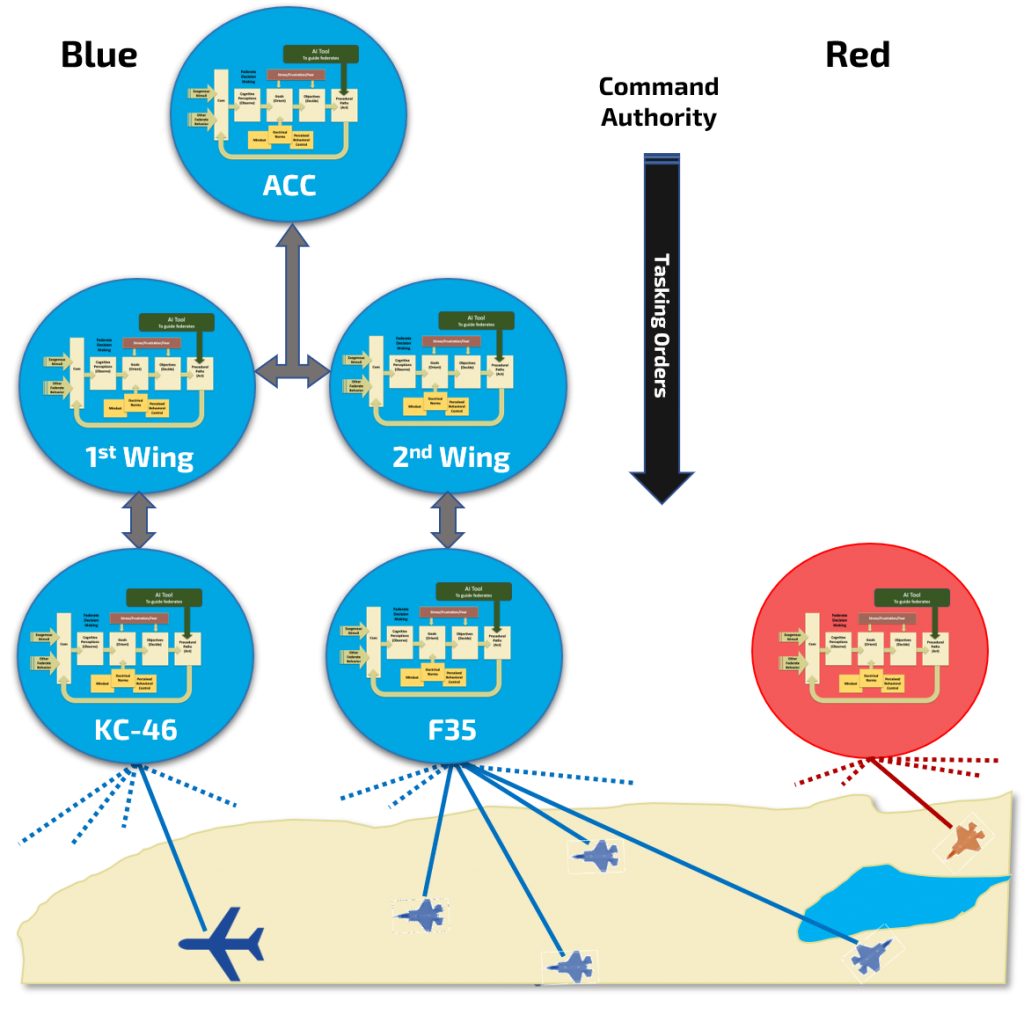
Application Areas
Since 2008 DYMATICA models have been representing a variety of topic domains and country regions from around the world, including countries from Africa, Asia, Europe, and North and South America.
The assessment domain includes hybrid warfare activities—such as cyber messaging and deception; near-peer deterrence; state and non-state internal stability; migration; and propensity for aggressive behaviors.
Funding partners have included the United States’ Department of Defense (DoD), the United Kingdom’s Ministry of Defence, the intelligence community, NATO, Department of Energy, as well as SNL through its internal Laboratory Directed Research and Development program.
For General DYMATICA Information
Fact Sheet
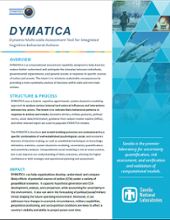
Click Fact Sheet to download PDF.
Brochure
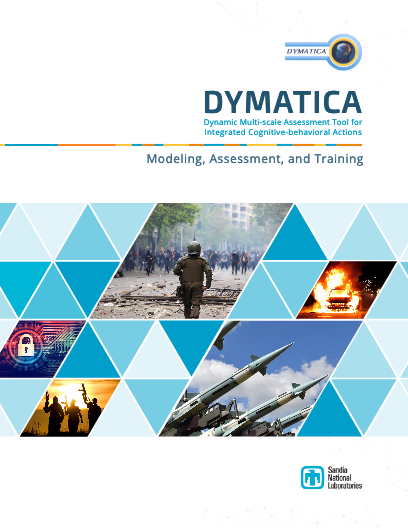
Click Brochure to download PDF.
Presentation
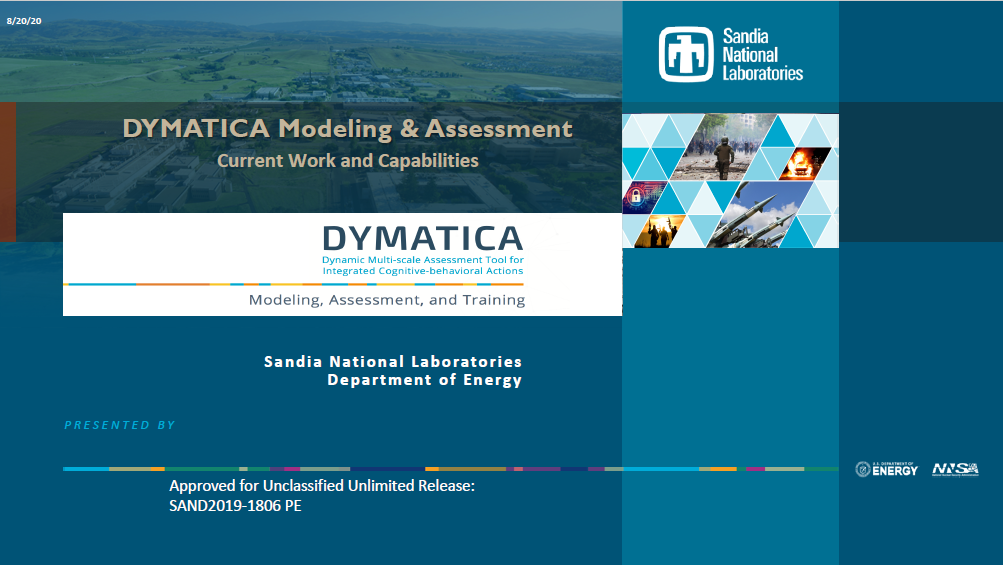
Click Presentation to download PDF.